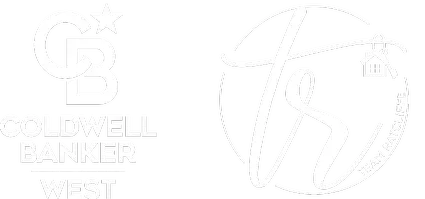
Tips for Problem Solving in Your Business
Know the ProblemIt can be easy to misidentify the problem in the first place and this is one of the biggest mistakes business owners make commonly. Often this happens when you pinpoint the symptom but not the cause. An extreme example would be if you never gave your employees a day off. They would eventually get burned out, their work would suffer and many would quit. You might misidentify this as a lack of motivation among your staff instead of realizing that no one can work seven days per week indefinitely! To avoid this, try stating the problem as objectively as possible. An example might be “Employees are not as productive as they should be.” In this early stage, you avoid trying to diagnose the reason, which gives you access to the broadest base of solutions.Talk to StakeholdersIn the admittedly absurd example above of employees who work 365 days per year, you would avoid misdiagnosing the source of the problem by simply asking them what the issue was. Once they explained that they need to work regular five-day weeks like everyone else, you could quickly put this solution into place. Of course, understanding the issue is usually not this straightforward, but talking to the people closest to the problem and with the most immediate stakes in it can give you the insight you need to find a solution.A more realistic example might involve issues with a fleet’s efficiency and safety. You might wonder whether the problem is with the quality of the drivers or your processes, but if you speak to the fleet manager, they might suggest dash cams to help with monitoring, coaching, and tracking driver behavior. What’s important in this step is that you talk to everyone affected and get feedback about potential solutions. Find out what would be optimal for them. You may not be able to come to a solution that suits everyone, but this information will still be useful to you in the evaluation stage.Brainstorm and EvaluateWith the data you’ve gathered, it’s time to brainstorm ideas without judgement. Depending on the situation and the structure of your business, you might do this on your own or as part of a team. Once you have created a substantial list of potential ideas, start evaluating each one as objectively as you can. You might assign various criteria or make pro and con columns for each one. This can help you make the optimal choice.Plan for EvaluationA fatal flaw for those who make it this far is failing to identify a way to evaluate the plan at a later date. This can lead to a situation where you not only put into motion a solution that is ineffectual but you are still stuck with the original problem. An effective plan for evaluation needs to be as specific as possible. You need to identify a certain amount of money saved or a certain number of units shipped by a certain date. You also need a plan for what you’ll do if you fall short. This will include having to go back to the drawing board in terms of coming up with something new, but you’ll presumably have more data at this point to help you make your decision. Be sure that, in addition to going back to your original brainstormed list, you consider the possibility that you might have misidentified the true problem way back in step one.The post Tips for Problem Solving in Your Business appeared first on SDNews.com.

Sen. Atkins: Diverse legislature will bring solutions despite budget woes
I am deeply humbled that my colleagues have again entrusted me with the responsibility and honor to lead as the President pro Tempore of the Senate. As I reflect on my combined 12 years in the Assembly and Senate, I’m struck by how much the California Legislature has changed and grown to truly reflect the 40 million people who call our state home. After the swearing in of members of both houses last month, the Legislature is the most diverse the state has ever seen – including historic numbers of women, Latinx and LGBTQ people. That diversity will be our strength as we go about the People’s business.Over the last few years, we have worked hard to find solutions to some of our state’s biggest problems: from wildfires to housing and health care. We have made great strides on getting real relief to families struggling to make rent, and keep up with rising costs at the gas pump and in the grocery store. As we begin a new two-year session, we still have our work cut out for us. Climate change is a daily threat, homelessness persists, and we face a challenging financial future. In years past, the recent report from the Legislative Analyst’s Office forecasting budget deficits would have kick-started talks of painful cuts and middle class tax increases – not anymore. We have prepared for this moment. Over the past decade, California’s leaders have turned our state’s fiscal condition around and made responsible budgeting our top priority. We built our reserves to record highs, paid down debts, and avoided committing one-time resources to ongoing purposes, while also making historic progress with new commitments that strengthen the middle class, assist struggling Californians, and fight climate change.Thanks to our responsible approach, we are confident that we can protect our progress and craft a state budget without ongoing cuts to schools and other core programs or taxing middle class families. We will be continuing our historic work on climate and wildfires, homelessness and affordable housing, and access to important services, such as health care and metal health – all issues of equity laid bare by the pandemic.As the new year begins, I feel a sense of increasing hope, optimism, and resolve. There are still great challenges ahead, from growing extremism, to climate, to housing, but I’m noticing more of a willingness among reasonable people and elected officials to come together when it matters.I remain grateful for the privilege of representing you, and I wish each of you a happy and prosperous 2023.The post Sen. Atkins: Diverse legislature will bring solutions despite budget woes appeared first on SDNews.com.

Arroyo Canyon—a secret trail under historic ‘wiggly’ bridge
Our exploration of urban canyons in Uptown neighborhoods this time around is Arroyo Canyon,Shadows of pedestrians on the floor canyon from Spruce Street Bridgea small trail tucked behind a private residential area. After enjoying a lunch of enchiladas and a couple cups of cinnamon-infused Café Olla at Jimmy Carter’s, we went for a walk. Going west on Spruce Street to the corner of Front Street, we saw the Spruce Street swinging bridge, called the “wiggly bridge” when it was built in 1912.The view of Arroyo Canyon from atop Spruce Street Suspension Bridge (Photos by Cynthia G. Robertson)It takes a bit of an adventuresome spirit to master the art of walking the first time on the 375-foot long pedestrian bridge. Supported by cables embedded in concrete slabs beneath the soil, the bridge suspends over Arroyo Canyon. A strong wind, a rowdy bunch of people, or just walking a bit unsteadily can make it swing just enough to cause a bit of vertigo for people even with the best balance. But it should be on everyone’s bucket list of things to do in San Diego. Engineered by Edwin Capps, the footbridge was initially designed to provide pedestrians a passage across the canyon in order to get between the streetcar trolley lines on Fourth and Fifth Avenue. It has stayed in place ever since— long after the trolley was removed from Uptown’s cityscape. Now the bridge is still a best-kept secret to many San Diegans. After we had ventured across and back the swinging bridge, gazing down at the Arroyo Canyon trail meandering underneath, we made it our mission to explore the trail.The Spruce Street Suspension Bridge requires a bit of adventuresome spirit to walk across for it is swinging 70 feet above Arroyo Canyon.We drove to Laurel Street, heading down the steep-banked hill to State Street. There we turned right and turned a couple of blocks down at Arroyo Street. At the corner of Arroyo and Dove streets, we bore left where Arroyo turns into North Arroyo Street. This is where it got tricky. At the end of North Arroyo Street is a driveway with a sign announcing Arroyo Canyon Private Residences. Fortunately, we came across another walker; she was familiar with the neighborhood. She told us to park along that long block and then walk up the long blacktop driveway until we came the first major right hand turn. That is where we turned. It is always amazing how quiet and sheltered these urban canyons can be. It is no different for Arroyo Canyon. “It’s like a private forest in here,” said the woman who helped us find it.Eucalyptus trees tower above Arroyo Canyon Trail.Indeed, it is. Eucalyptus trees reach up to forever. A dry stream bed filled with river rocks runs alongside the trail. Laurel Sumac, Lemonade Berry and Castor Bean abound. About halfway down the trail, you’ll encounter the swinging Spruce Street Bridge seventy feet above. The vertigo-inducing bridge is quite a spectacle from beneath, invoking a new respect for yourself and others who walk across the bridge. A cool breeze sifts along the canyon’s quarter-mile run. At the trail’s end, you will find a padlocked metal fence protecting a private property. The native Lemonade Berry flourishes alongside the Arroyo Canyon Trail After gazing upward at the eucalyptus tree castles and taking in a full breath of the perfumed air, it is time to turn around and follow the trail back down. It is a perfect time to reflect on the vision of San Diego city planners—as well as volunteers—to conserve these canyons as an important part of San Diego enrichment. More than 200 canyons in San Diego are available as open, hikeable space to the public under San Diego’s Open Space Division. These canyons are all part of the watershed system delivering water from the mountains and urban landscape to the oceans. They are just as beneficial for community recreational use as they are for water quality filtration. Through the help of dedicated volunteers, formerly trashed-out canyons are transformed into areas for sustainable use. Local non-profit groups collaborate their efforts with San Diego Parks and Recreation. Some of these groups include: San Diego Canyonlands; I Love a Clean San Diego; San Diego Audubon Society and Sierra Club San Diego Chapter. Next time, we will explore a trail in Mission Hills near a historic park. The post Arroyo Canyon—a secret trail under historic ‘wiggly’ bridge appeared first on SDNews.com.
Categories
Recent Posts











